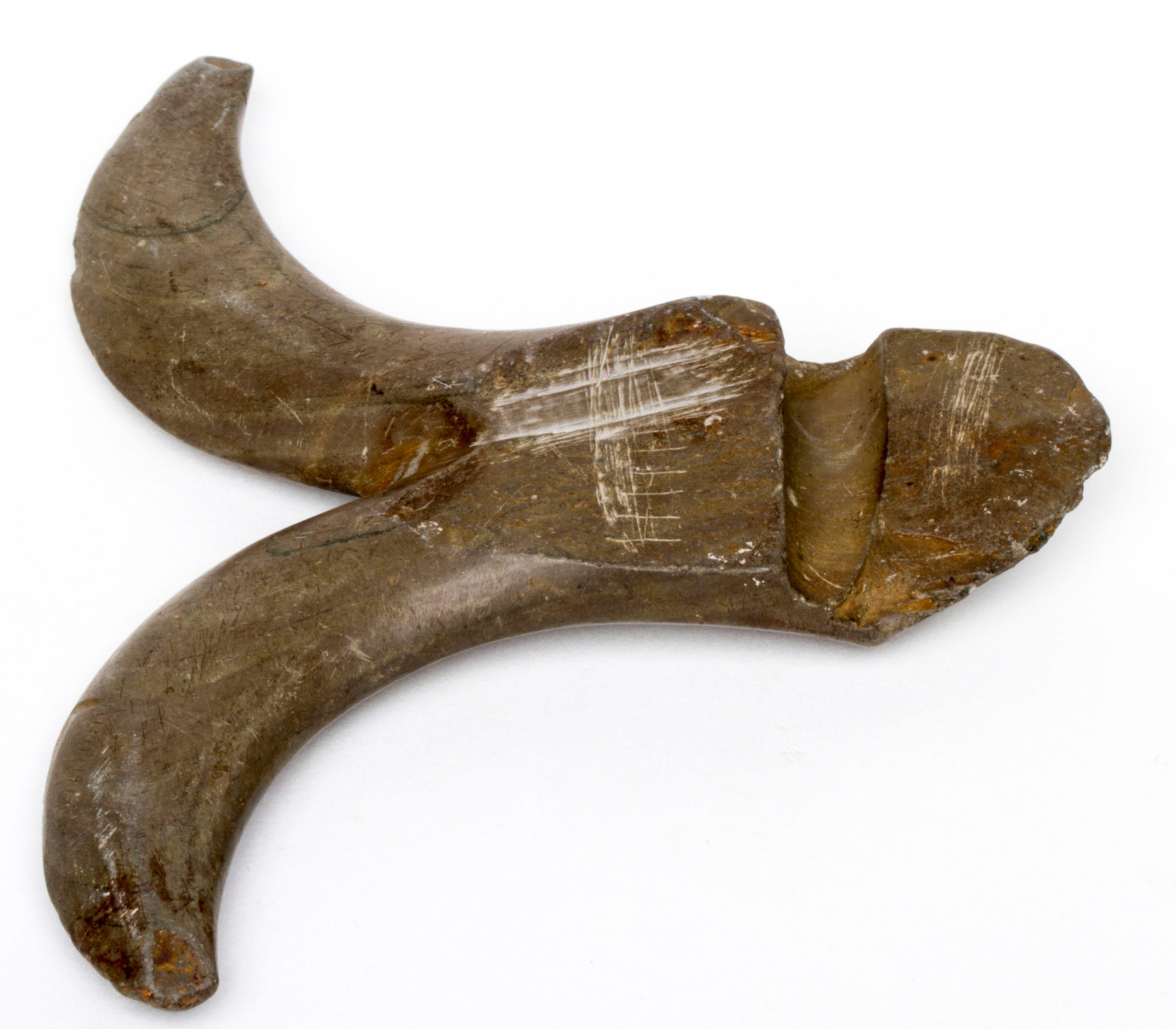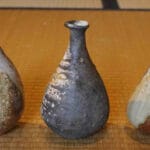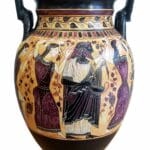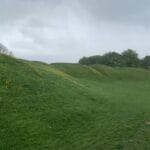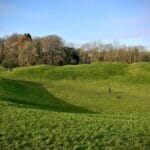Imagine discovering a meticulously crafted stone, perfectly symmetrical, pierced by a central hole. This is a bannerstone—a captivating artifact unearthed across eastern North America, offering a glimpse into the lives and beliefs of ancient Native American cultures. These objects, dating back thousands of years, range from simple forms to exquisite works of art, leaving archaeologists to ponder their true purpose. Were they ceremonial objects, symbols of power, or perhaps even hunting tools? This article explores the fascinating story of bannerstones, from their diverse forms and artistry to the ongoing debate surrounding their function, revealing the complexities of these ancient artifacts and their enduring cultural significance.
Decoding the Bannerstone Enigma: Function, Form, and Cultural Context
Bannerstones, primarily discovered across eastern North America, are distinctive artifacts characterized by their symmetrical shapes and a central perforation, typically ranging from a quarter-inch to three-quarters-of-an-inch in diameter. While the classic “butterfly” shape is prevalent, considerable stylistic diversity exists, showcasing remarkable craftsmanship for their era. The meticulous chipping, grinding, and polishing of these usually stone artifacts—often from naturally worn river stones—demonstrate advanced technological skills. However, the purpose of these intriguing objects remains a subject of ongoing investigation.
The Bannerstone Debate: Atlatl Weights or Ceremonial Symbols?
For decades, archaeologists have grappled with understanding the function of bannerstones, with two primary theories emerging:
1. Atlatl Weights: The Hunting Hypothesis
One prominent theory proposes that bannerstones served as counterweights for atlatls—ancient spear-throwers. This hypothesis gains some support from the discovery of bannerstones near atlatl fragments in certain burial sites, notably documented by early researchers like William Webb in Kentucky. However, more recent experimental archaeology, particularly the work of Larry Kinsella, suggests that attaching a bannerstone to an atlatl may not significantly improve projectile accuracy or distance. This has led many to question the validity of this theory as a universal explanation.
Weighing the Evidence: Atlatl Weights – Pros and Cons
| Pros | Cons |
|---|---|
| Some bannerstones found near atlatl parts. | Experiments often show mixed or negative results regarding improved throwing accuracy. |
| Might have aided in atlatl balance or comfort during extended hunts. | Many bannerstones exhibit minimal or no wear, indicating infrequent or non-utilitarian use. |
| The substantial size and shape variation suggests a diversity of functions. |
2. Ceremonial Objects: Beyond Practicality
A compelling alternative suggests that bannerstones held significant ceremonial or symbolic meaning. This theory is supported by the frequent use of unusual, carefully selected materials and the presence of intricate designs on many specimens. The lack of wear on many bannerstones further reinforces the idea that they were not everyday tools. The numerous bannerstones discovered in burials at sites like Indian Knoll in Kentucky strongly support this notion, suggesting a deeper cultural significance beyond mere practicality.
Bannerstone Creation: A Testament to Ancient Skill
The creation of a bannerstone was a time-consuming and exacting process. It likely involved carefully selecting appropriate river rocks and then meticulously shaping and polishing them to achieve the artifact’s final form. Examination of unfinished bannerstones (preforms) reveals the remarkable expertise and precision involved, highlighting the significant cultural value placed upon these objects.
Bannerstones Through Time and Space: Regional Variations and Cultural Exchange
Bannerstones are primarily associated with the Eastern Woodlands Archaic period, spanning thousands of years. Their widespread distribution suggests extensive trade and communication networks among various groups, indicating a degree of social complexity and inter-group interaction. The diverse array of styles and designs across different regions highlights the expression of distinct cultural identities and artistic traditions.
For example, Southeastern bannerstones often feature elaborate butterfly, bird, or swirling patterns, frequently crafted from chert, slate, quartz, and even exotic materials, possibly suggesting ritualistic items or markers of social status. In contrast, Northeastern bannerstones tend to exhibit simpler, less decorative designs, more commonly made from locally sourced stone, potentially suggesting a less prominent ceremonial role. The Ohio Valley showcases a range of styles, blending both simpler and more intricate designs, possibly reflecting a blend of traditions or a lower overall value placed on the artifacts.
Notable Bannerstone Discoveries and Museum Collections
Numerous significant archaeological sites have yielded notable collections of bannerstones. Indian Knoll in Kentucky stands out as a particularly rich source, famous for its bannerstone burials. Major museums worldwide, including the Metropolitan Museum of Art, house remarkable collections of these artifacts, offering invaluable opportunities for scholarly study and public engagement with the past.
Ongoing Research: Unraveling the Enduring Mysteries
The bannerstone enigma continues to fascinate researchers. Advances in technology and methodologies, such as 3D modeling and isotopic analysis, are providing new insights into bannerstone production, use, and cultural context. Experimental archaeology continues to challenge previous assumptions about atlatl weight function, while studies on regional styles continue to shed light on cultural exchange and inter-group relationships. The ongoing debate underscores the dynamic nature of archaeological research, recognizing the likelihood of evolving conclusions as new data emerge.
Protecting the Past: Conservation and Ethical Considerations
The preservation of bannerstone sites and the responsible stewardship of these artifacts are paramount. Legislation such as the Native American Graves Protection and Repatriation Act (NAGPRA) provides a framework for the respectful handling and potential repatriation of these objects, recognizing the cultural heritage and sensitivities of descendant communities. Each bannerstone holds a unique story: It is our collective responsibility to treat them, and their history, with utmost care and respect.
What Were Bannerstones Used For? A Closer Look
The enigmatic nature of bannerstones often leads to the question of their purpose. While the atlatl weight theory remains a popular idea, supported by some archaeological discoveries of bannerstones near atlatl components, compelling evidence suggests a broader range of functions. The lack of wear on many specimens challenges the exclusive use as a hunting implement. It is likely that bannerstones played both utilitarian and ceremonial roles, their significance varying among different cultural groups and across time. The exquisite craftsmanship and the use of rare or exotic materials suggest a profound cultural importance, potentially related to rituals, social status, or spiritual beliefs. Ongoing research, including chemical analysis of the materials, 3D modeling studies, and a deeper examination of wear patterns, may further elucidate their diverse functions and cultural significance. The complexity and diversity of bannerstones across various regions continue to fuel fascinating ongoing research. Our understanding of these objects is continually evolving, highlighting the dynamism of archaeological investigation.
[https://www.lolaapp.com/bonnie-and-clyde-funeral-attendance] (Note: This link is retained as requested but is contextually irrelevant to the bannerstone article. Consider removing it unless a relevant connection can be established.)
Geographical Distribution and Regional Styles of Bannerstones
Bannerstones are not uniformly distributed across the landscape. Their primary concentration lies in eastern North America, spanning a vast territory from the Great Lakes region to Florida and west to the Mississippi River Valley. This widespread distribution strongly suggests significant interaction and trade networks between different Indigenous groups. The uneven distribution, with some areas yielding more artifacts than others, reflects differences in population density, resource accessibility, and possibly differing cultural practices surrounding bannerstone production and use. Kentucky, in particular, stands out with a high concentration of finds.
The regional variations in bannerstone styles, including shape, size, material, and decorative elements, offer additional insights into ancient social structures and trade networks. Detailed comparative analysis of these regional differences could reveal patterns of cultural exchange and interaction. The diversity of materials, ranging from locally sourced stones to exotic varieties, further suggests significant trade routes and social connections across the vast landscapes of ancient North America.
| State | Estimated Number of Bannerstone Finds | Notable Sites | Prominent Styles & Materials |
|---|---|---|---|
| Kentucky | High | Indian Knoll, and numerous other sites | Diverse; often intricate designs, exotic materials |
| Ohio | High | Scattered sites across the state | Variety of styles, locally sourced materials common |
| Tennessee | Significant Numbers | Various locations | Butterfly shapes; chert, slate |
| Illinois | Moderate | Concentrated primarily in the southern part | Simpler designs; local materials |
| New York | Low | Widely scattered sites | Simpler, less ornate styles; local stone |
| Alabama | Moderate | Various locations | Mix of styles; often smaller |
| Georgia | Moderate | Some notable finds | Mix of styles, slate and other local materials |
| West Virginia | Low | Some isolated finds | Simple styles; local materials |
(Note: These numbers are estimates based on available archaeological data and may not be entirely accurate, reflecting the ongoing nature of discovery and research.)
Dating Bannerstones: Unraveling the Temporal Context
Determining the precise age of bannerstones presents significant challenges. Archaeologists employ several dating techniques to estimate their age range. Radiocarbon dating, relying on analyses of organic materials found in association with bannerstones, is crucial, but needs well-preserved organic matter within a suitable context. Typological dating involves comparing the stylistic features of bannerstones, assuming that similar forms likely originated around the same period. Stratigraphic dating builds on the principle that deeper layers are generally older than those above, but requires a lack of soil disturbance over time.
Current estimates generally place the majority of bannerstones within the time frame of roughly 6000 to 1000 BCE across the Eastern Woodlands, but there is significant regional variation, spanning a broad range of centuries across different regions. Further refinements in dating techniques and ongoing discoveries continue to refine our understanding of the precise chronological context of these fascinating artifacts. Luminescence dating and accelerator mass spectrometry (AMS) radiocarbon dating, in particular, are emerging tools helping to clarify these chronological ambiguities.
| Region | Estimated Age Range (BCE) | Dating Methods Used | Distinguishing Features |
|---|---|---|---|
| Ohio Valley | 4000-1000 | Radiocarbon, Typology, Stratigraphy | Often larger, more intricate designs; variety of materials |
| Southeast Coast | 5000-2000 | Radiocarbon, Stratigraphy | Typically smaller, simpler shapes; slate is a common material |
| Mississippi Valley | 3500-1500 | Radiocarbon, Typology, Stratigraphy | Moderate size and design complexity; unique regional styles |
(Note: These age ranges are estimates and are subject to revision as new data and methodologies become available.)
The multifaceted nature of bannerstones – their diverse forms, regional styles, and unclear functionality – continues to captivate and challenge researchers. While the atlatl weight hypothesis remains a possibility for some specimens, the widespread occurrence of intricately designed and minimally-worn artifacts strongly suggest a broader, likely ceremonial or symbolic role in ancient Native American societies. The ongoing research, with its continuous refinement of dating and analytical techniques, reveals important details about ancient societies throughout the Eastern Woodlands. The study of bannerstones allows researchers to understand trade networks, ritual practices, and the artistic and technological capabilities of those early cultures. The mystery surrounding these remarkable artifacts remains a powerful catalyst for ongoing exploration and discovery.
- Deadly Strike of the Hydra: WoW SoD Blackfathom Deeps Guide & DPS Optimization - November 28, 2024
- Dionysus Feast Painting: From Paris Olympics Controversy to Ancient Bacchanalia - November 28, 2024
- Original Feast of Dionysus Paintings: A Journey Through Artistic Depictions of Bacchic Revelry - November 28, 2024
